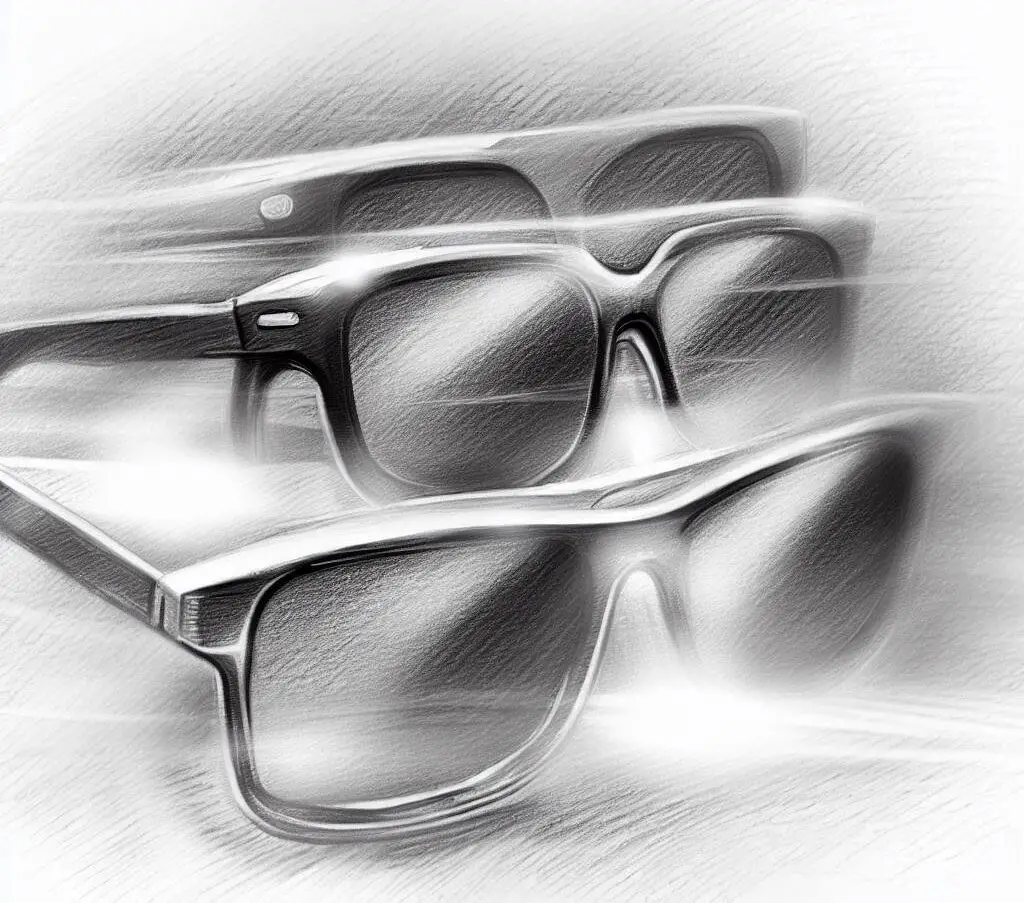While sunglasses equipped with Bluetooth audio might have been around for a while, a large section of the consumer base might still consider them novelty products. However, with popular mainstream brands such as Bose going all out to put their versions on the map, this product segment has seen a new wave of interest.
Bose has achieved a balanced blend of fashion and function with Bose Frames, a series of sunglasses with audio capabilities. While the glasses will satisfy those with a discerning sense of style, they also come with the trademark Bose audio quality and sound signature that so many have come to know and love.
The Bose Frames series has several models across different price points. If you are unsure while choosing between the Tenor, Tempo, and Alto models, it is good to remember that, apart from the price difference, there are also other differences in features and audio quality that you should be aware of.
Check your budget and consider the audio listening experience you are looking for before zeroing in on one of these three very capable audio sunglasses.
~~~ Check Price: Bose Frames Tenor ~~~
~~~ Check Price: Bose Frames Tempo ~~~
~~~ Check Price: Bose Frames Alto ~~~
Quick Overview
At the very outset, it is important to note that the Alto is a model from the previous generation of Bose Frames products, while the Tenor and the Tempo come from the newer, more recent iteration of models. There are significant differences between these generations and these can play into your decision.
The Bose Frames Alto boasts of good sound quality but lacks some of the advanced features of the newer models. At an MSRP of just under $150, it is also the cheapest of the three — an important consideration if you are on a tight budget.
The Alto is designed more to look like a standard pair of glasses with a sleek frame and sturdy design and materials. It is also the only pair of audio sunglasses in this roundup with Bose AR support.
The Bose Frames Tenor, on the other hand, sports a design much more reminiscent of classic sunglasses, scoring higher on the fashion quotient. At an MSRP just under $250, you are looking at a hundred-dollar premium over the Alto. While it loses out on Bose AR, it gets a slew of other features, better audio quality, a higher capacity and faster-charging battery, and other nice-to-have features.
The Bose Frame Tempo is focused more on sports use, with a sleeker half-frame design. In terms of features and price, it is quite similar to the Tenor. Choosing between these two will come down to a preference for the design and the intended use case.
Design Features
With their audio capabilities, it is easy to overlook the fact that the Bose Frames products are, in essence, sunglasses and that is their main intended use. So, how good are they as pure sunglasses?
The Alto package contains a basic carrying case, along with a cloth bag and a micro-USB charging cable. The lenses are non-polarized but offer good UV protection. It is also available in two size options, allowing you to choose a fit that suits your facial features. The product comes with IPX2 water resistance, which makes it resistant to splashes at an angle of 15 degrees or less.
The Tenor features a more contemporary sunglass design and comes in a package that also contains a charging cable, a sturdy carrying case, and a cleaning cloth. It uses polarized lenses that offer a sharper, glare-free vision, and better eye protection in bright surroundings. The product provides full UV protection and also comes with IPX2 water resistance.
The Tempo is built with sports use in mind and the entire package is a testament to this. Out of the box, you get the rugged glasses along with a cleaning cloth, a USB type-C charging cable, and a tough and durable carrying case made from ballistic nylon. The Tempo also uses polarized lenses. In addition, it comes with three different nose pad options to ensure a comfortable and snug fit. Moreover, the Tempo is IPX4 water resistant, which makes it splash resistant from every angle.
For all three models, you can replace the included lenses with prescription lenses.
Audio Quality
All three models in the shootout come with Bose Open Air Audio technology, which enables users to enjoy high-quality music while also being able to listen to external sounds, a great safety feature for regular use. While the Alto has the first iteration of this feature, the Tenor and the Tempo get a much-improved version of this. In these two models, Bose makes use of a wafer-thin acoustic package.
This makes the sound fuller, richer, and more rounded out in the extreme ends of the audible spectrum. While all three feature the patented smiley EQ curve that is characteristic of consumer earphones, the Tenor and Tempo have punchier bass, clearer midrange, and a lush, exciting top-end.
This difference in audio quality is also down to the fact that the Alto uses smaller drivers while the Tenor makes use of 16mm drivers. The Tempo has even better sound with 22mm drivers. If it is high-fidelity audio that you are after, the Tenor and Tempo deliver much better results consistently.
Another feature that sets the Tenor and Tempo apart is the volume-optimized EQ. EQ curves, if applied in a generic fashion, can sound different depending on the volume of the audio. With volume-optimized EQ, the curves are applied uniformly and proportionally across different volume levels. This means that you can still enjoy a healthy low-end when you are listening quietly and can steer clear of distortion when listening at a high volume.
However, when it comes to controlling your music, the Alto has a killer feature that is absent in the other two models – Bose AR.
This pair of glasses has integrated motion sensors that can accurately track the orientation and movement of the head and the body. It can then use this motion data input to control the playback of the audio. This is an excellent feature that affords hands-free control of the music.
If this is something you must have, you will find this only in the Alto. However, Bose announced in 2020 that it is discontinuing its AR program — so there is no guarantee that these features will be supported moving forward.
Calling and Connectivity
When using audio sunglasses, calling is one of the most convenient use cases.
All three Bose Frames models support audio calling with a few important differences. When it comes to call quality, you are more likely to get better results with the Tenor and the Tempo. Not only do these two models offer clearer audio, they also come with a dual beam-forming microphone array. These sensitive microphones do a better job of picking up audio and the advanced digital signal processing in these products results in a much clearer voice quality during calls.
All three models connect via Bluetooth with support for A2DP and HPF. The Alto works with the older Bose Connect app while you will need the newer Bose Music app to interface with the Tenor and the Tempo.
Battery and Other Important Features
Another big difference in these three Bose Frames models comes in the form of the battery capacity and characteristics.
The Alto model has the smallest battery of the lot, with up to 3.5 hours of music playback. It can also take up to two hours to charge completely.
In contrast, the Tenor has a larger battery that can give you up to 5.5 hours of music playback while being able to charge completely in just one hour.
The Tempo has the best battery of the lot, taking only one hour to achieve full charge. However, it can provide up to 8 hours of music playback.
Another convenient feature that you will find in the Tenor and Tempo but not in the Alto is the ability to access your voice assistant of choice. You can use these to invoke either Google Assistant or Siri, depending on whether you are using an Android phone or an iPhone.
The nose pad options that come in the Tempo can also be a game-changer if you are looking for a rugged pair of audio sunglasses that fit perfectly.
The Technology Behind Audio Sunglasses
Now that we have taken a look at the specifics of Bose Frames models, it’s worth taking a brief detour to explore the fascinating technology that makes audio sunglasses possible. After all, combining two such different functionalities into a single, stylish, and wearable product is no small feat.
The magic behind these ingenious devices lies in technologies like inverse audio and bone conduction. These technologies allow sound waves and vibrations to be perceived while bypassing your eardrums altogether. This allows you to hear high-quality audio without obstructing your natural hearing, making it a safer option if you’re out and about.
Final Verdict
There are many differences between the three Bose Frames models under comparison. Ultimately, for the discerning buyer, the choice boils down to some very simple priorities.
If you are looking for a pair of audio sunglasses on a tight budget, the Alto is your to-go option. Likewise, the Alto is a salient option if you are looking for glasses that come in multiple size options. And finally, if you are someone who considers Bose AR to be an essential feature you cannot do without, go for the Alto.
The Tenor and Tempo are miles ahead of the Alto in terms of audio quality, features, and battery capabilities. Of the two, the Tempo emerges as the more sensible option, especially if you have sports use in mind. Even if you do not, the larger battery capacity, the better audio quality thanks to the larger drivers, and the IPX4 splash resistance can be extremely meaningful features. Since the two models sell at the same MSRP, our recommendation is to go for the Tempo unless you have a specific liking for the aesthetics of the Tenor.
FAQs
Can I replace the lenses in my Bose Frames with prescription lenses?
Yes, all three models of the Bose Frames allow for lens replacement with prescription lenses. However, it’s recommended that this process is carried out by a professional optician to avoid damaging the frame or the electronics.
Are the Bose Frames sunglasses water-resistant?
Yes, all models have some degree of water resistance. The Alto and Tenor models are rated IPX2, meaning they are resistant to water droplets from up to a 15-degree angle. The Tempo, designed for sports use, boasts an IPX4 rating, offering resistance from splashes from any direction.
Can I connect the Bose Frames to my phone or other devices?
Yes, all Bose Frames models can be connected to your smartphone or any other Bluetooth-enabled device. They also support Siri and Google Assistant, but this functionality is only available in the Tenor and Tempo models.




